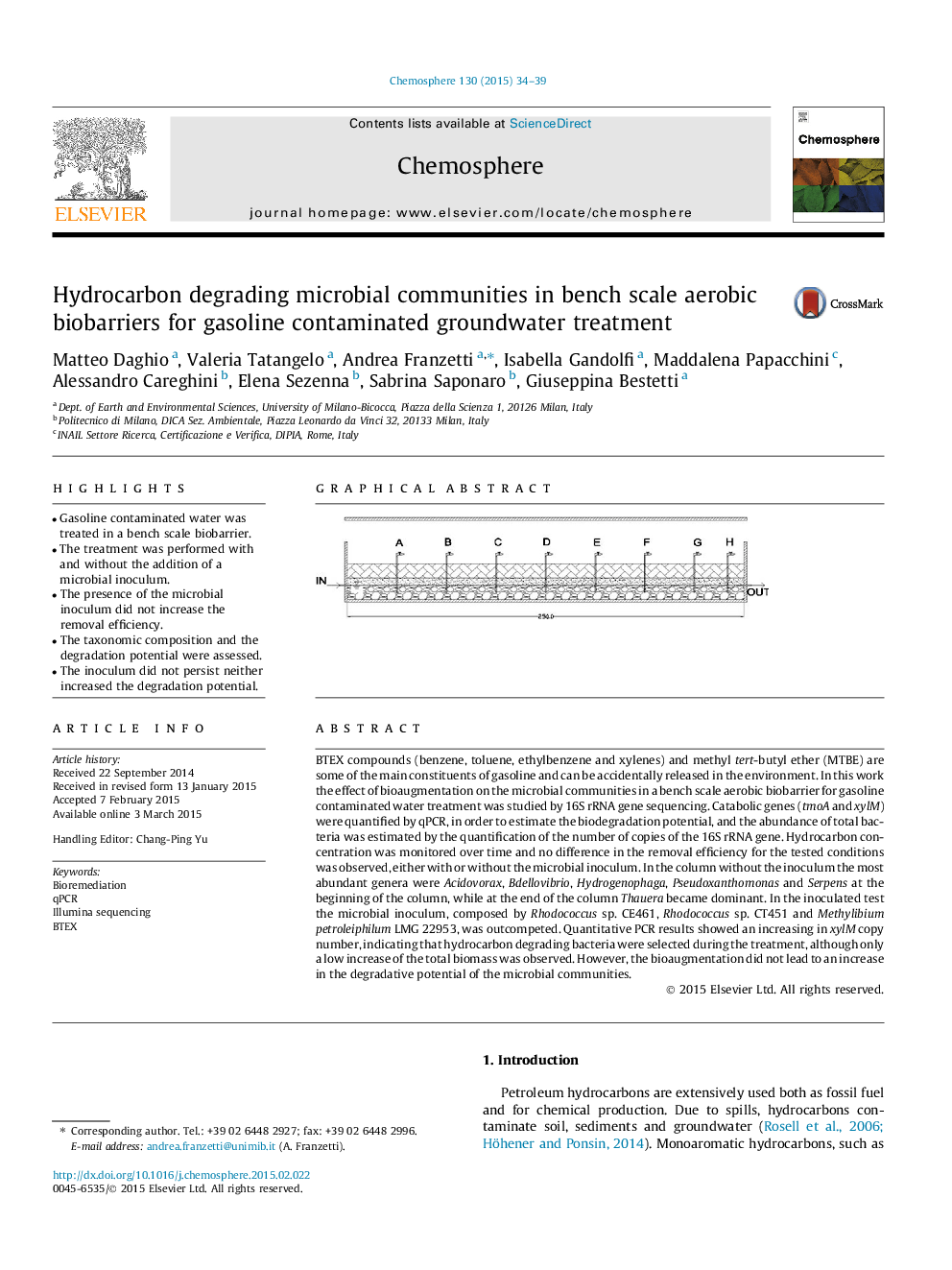| کد مقاله | کد نشریه | سال انتشار | مقاله انگلیسی | نسخه تمام متن |
|---|---|---|---|---|
| 4408320 | 1618841 | 2015 | 6 صفحه PDF | دانلود رایگان |
• Gasoline contaminated water was treated in a bench scale biobarrier.
• The treatment was performed with and without the addition of a microbial inoculum.
• The presence of the microbial inoculum did not increase the removal efficiency.
• The taxonomic composition and the degradation potential were assessed.
• The inoculum did not persist neither increased the degradation potential.
BTEX compounds (benzene, toluene, ethylbenzene and xylenes) and methyl tert-butyl ether (MTBE) are some of the main constituents of gasoline and can be accidentally released in the environment. In this work the effect of bioaugmentation on the microbial communities in a bench scale aerobic biobarrier for gasoline contaminated water treatment was studied by 16S rRNA gene sequencing. Catabolic genes (tmoA and xylM) were quantified by qPCR, in order to estimate the biodegradation potential, and the abundance of total bacteria was estimated by the quantification of the number of copies of the 16S rRNA gene. Hydrocarbon concentration was monitored over time and no difference in the removal efficiency for the tested conditions was observed, either with or without the microbial inoculum. In the column without the inoculum the most abundant genera were Acidovorax, Bdellovibrio, Hydrogenophaga, Pseudoxanthomonas and Serpens at the beginning of the column, while at the end of the column Thauera became dominant. In the inoculated test the microbial inoculum, composed by Rhodococcus sp. CE461, Rhodococcus sp. CT451 and Methylibium petroleiphilum LMG 22953, was outcompeted. Quantitative PCR results showed an increasing in xylM copy number, indicating that hydrocarbon degrading bacteria were selected during the treatment, although only a low increase of the total biomass was observed. However, the bioaugmentation did not lead to an increase in the degradative potential of the microbial communities.
Figure optionsDownload as PowerPoint slide
Journal: Chemosphere - Volume 130, July 2015, Pages 34–39
